Both Ripstiks and Waveboards were designed to mimic the dynamic surfing movements of a snowboard. Ripstiks are a slightly modified version of the dynamic Waveboards and they both offer a similar riding experience.
The main difference lies in the aesthetic value. Ripsticks are a bit basic, featuring a slightly shorter deck and wheels while Waveboards offer larger decks/wheels with vibrant colors.
What is a waveboard?
Waveboards are specially designed skateboards that feature only two wheels and require a slightly different maneuver to ride. In Spite of being a little harder to master than the skateboard, waveboards are incredibly popular among kids and teens.
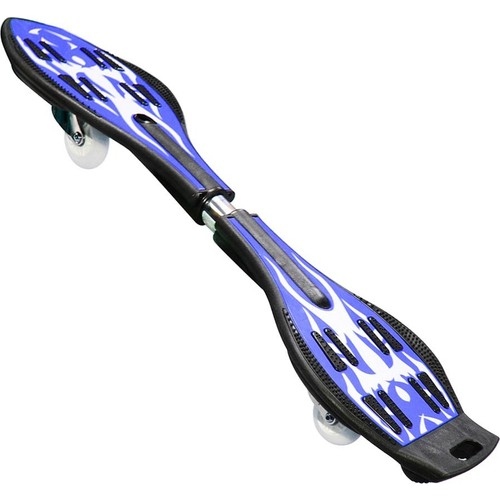
Unlike traditional skateboards, you don’t need to push your board with one foot on the ground. Instead, you need to use your body movements to move forward.
Traditional skateboards feature a plain deck, whereas the waveboard features two smaller decks connected with a torsion bar. These dynamic boards offer more flexibility and better control.
Let’s meet Ripstiks
To be blunt, Ripstiks are a skateboard hybrid. After the debut of the Waveboard in 2004, a company named the “Razor Company”, one of the largest manufacturers of kick scooters, launched their improved version after 2 years. Ripstiks are the result of that innovation.
Ripstiks feature 360° caster trucks and a pivoting deck, which allows a unique carving motion and doesn’t require any pushing. The twisting motion of your body will keep the board moving forward.
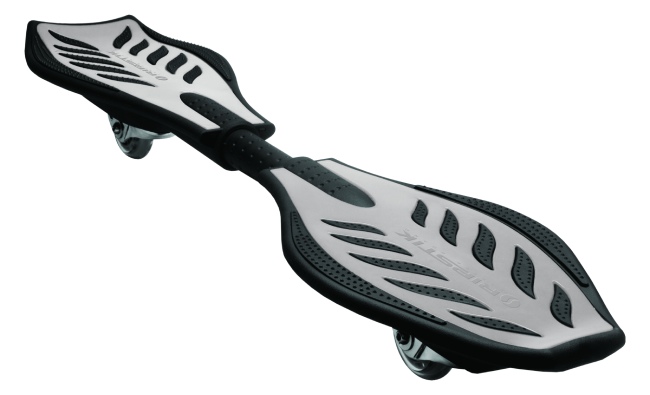
Even if the waveboard came out earlier, the Ripstiks are more popular among skaters; and that is because of the powerful marketing muscle of Razor. Over time, the name “Ripstik” became a brand itself.
Ripstik vs Waveboard: What’s the Difference
Design
Ripstik
The difference between a Ripstik and a wave board is mostly cosmetical. They feature similar designs and mechanisms. Ripstiks mainly come in many solid-color variants. The board is primarily made from durable plastic and a torsion bar.
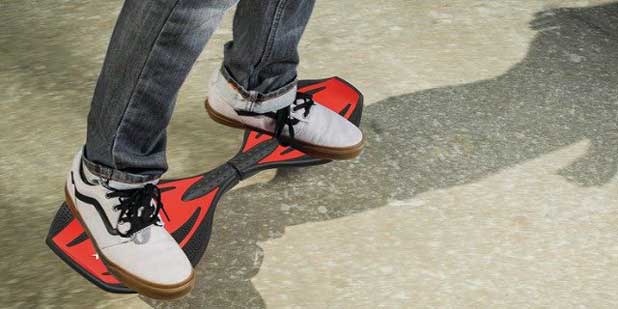
Waveboard
In contrast to basic, solid color Ripstiks, waveboards come in a wider variety of vivid colors, equipped with stylish words, and unique symbols.
Both waveboards and Ripstiks offer similar riding experiences but differ in aesthetic values. In terms of design, your preference is the only thing that matters.
If you long for a basic-looking board with all the basic functionalities, go for a waveboard. In case you care for a colorful outlook, a Ripstik will be a better choice.
Dimensions
Ripstik
Ripstiks are relatively shorter than Waveboards in both length and width. However, the torsion bar Ripstiks feature is a bit longer than Waveboards. The footplate shape is also different in Ripstiks.
Despite being a little shorter in dimensions, the Ripstiks provide a slightly better user experience and that’s why they’re considered “The best caster board.” Usually, Ripstiks are 27 inches long, 9 inches wide, and 4.5 inches tall.
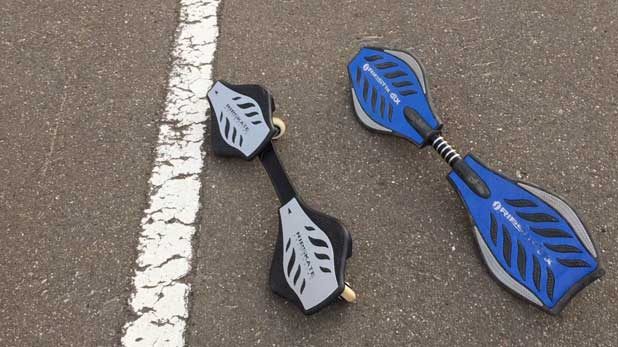
Waveboard
Waveboards on the other hand, are a bit longer in dimensions. They are 33 inches in length, 15 inches in width, and are just as tall as Ripstiks. Waveboards also feature slightly bigger wheels (77mm).
With a shorter torsion bar, making sharp turns is easier on Wave boards.
Deck
Ripstik
Due to its unique shape and design, the carving Ripstiks offer is more fluid and dynamic. The pivoting deck and 360° caster trucks will allow the board to make snowboard-like carvings and fluid, effortless turns.
However, both a Ripstik and a Waveboard deck are equipped with traction pads built up into spikes. This allows better foot anchoring and control.
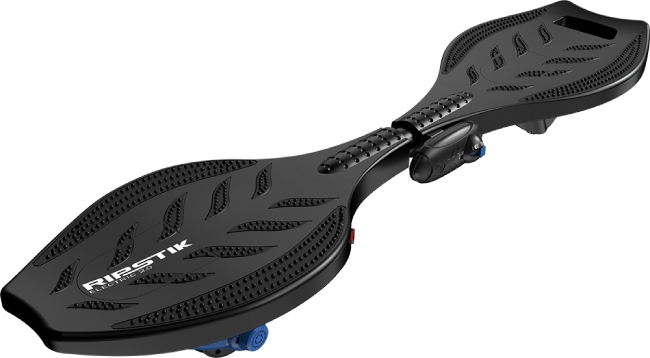
Waveboard
Both Ripsriks and Waveboards come with traction pads, but the quality is superior with the Wave blades. The main difference between Waveboards and Ripstiks is the deck and grip shape. The rest, including the experience, is similar to the most extent.
Wheels
Ripstik
Ripstiks feature a smoother ride with precision ABEC-5 bearing casters and 76mm polyurethane wheels. These superior quality components ensure a smooth ride regardless of the type of surface you’re riding on.
The compact design and high-quality material add reliability, safety, and comfort to most of your riding experiences.

Waveboard
On the flip side, slightly bigger wheels allow the Waveboards to glide faster. There are also a bunch of tricks you can learn and master on Waveboards.
These dynamic boards also feature illuminating wheels that turn on as you ride. These specially designed wheels help you be more obvious on the road and thus, more secure. The quicker you ride, the brighter the lights will glow.
Price
Ripstik
Being a slightly improved version, they cost a bit more than the basic Waveboards. You can get a pretty decent quality Ripstik for about $80-100, The usual price range is from $60-150.
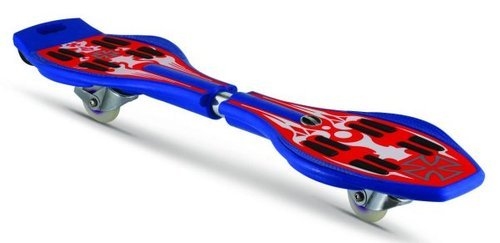
Waveboard
Despite offering a similar riding experience, wave boards are a cheaper alternative. You’ll need to spend around $40-120 for a waveboard.
Ripstik Vs WaveBoard: Which one is the best for you
As mentioned earlier, both Ripstiks and waveboards offer almost a similar experience. The primary difference between these two types of skateboards (glorified) is cosmetical.
The Ripstick comes in a more solid-color, basic design whereas waveboards come equipped in various vivid and wild combinations of color, text, and symbols.
Additionally, the Waveboards are slightly cheaper than the Ripstiks. If you are looking for a more affordable option, go with the basic Waveboards.
However, since both provide almost similar riding experiences, it all comes down to your personal experience and preference. You are free to choose any of the boards that feel and look compatible with your persona and riding style.
FAQs
1. What tricks can I do on a Ripstik?
Ans: Here are some neat tricks you can try and master with your Ripstik:
- Flip start
- High caveman
- The nose manual
- Hang 10
- Hang 20
- Riding a curb
2. How fast can I go on a Ripstik?
Ans: Around 10mph. Whether you use a standard Ripstik or an electric one, the maximum speed is pretty much the same. They’re built for maneuverability, not speed.
3. How does a wave board work?
Ans: The key to riding a wave board lies in your body movements. The 360° wheels will twist and turn with your feet, taking you forward. You need to make the “S” motion with your shoulders and hips. The process is somewhat similar to snowboarding.
4. What is a Waveboard made of?
Ans: The deck of a Waveboard is made from high-end plastic, while the castor and the torsion bar are made from steel/aluminum alloy; and the wheels are made from polyurethane.

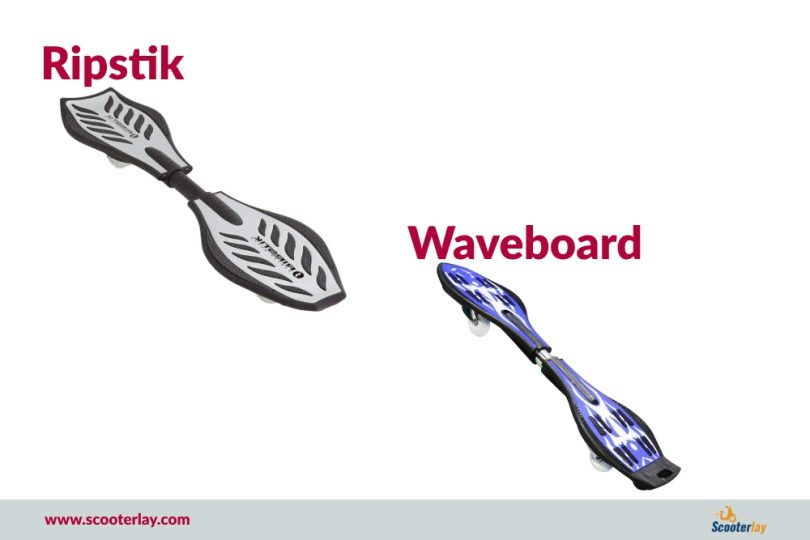
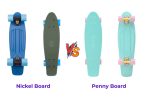
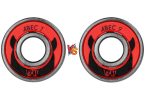
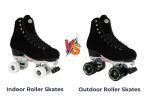
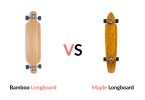


Leave a Comment